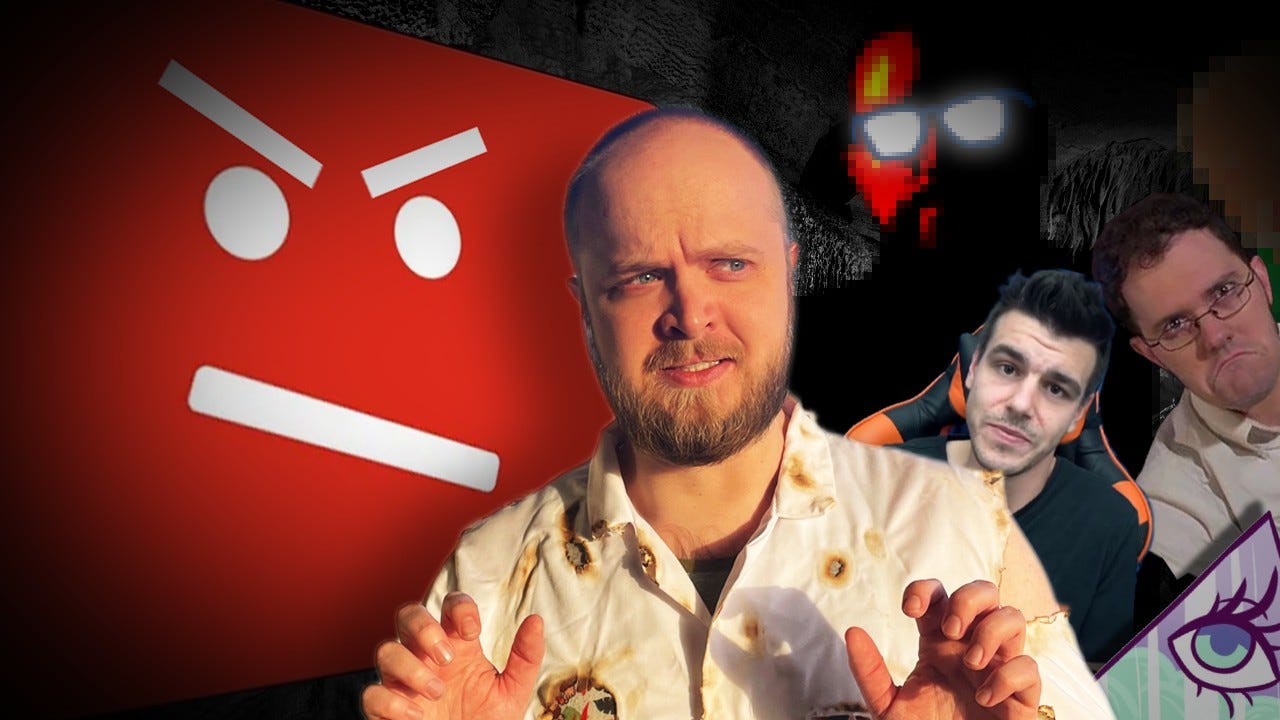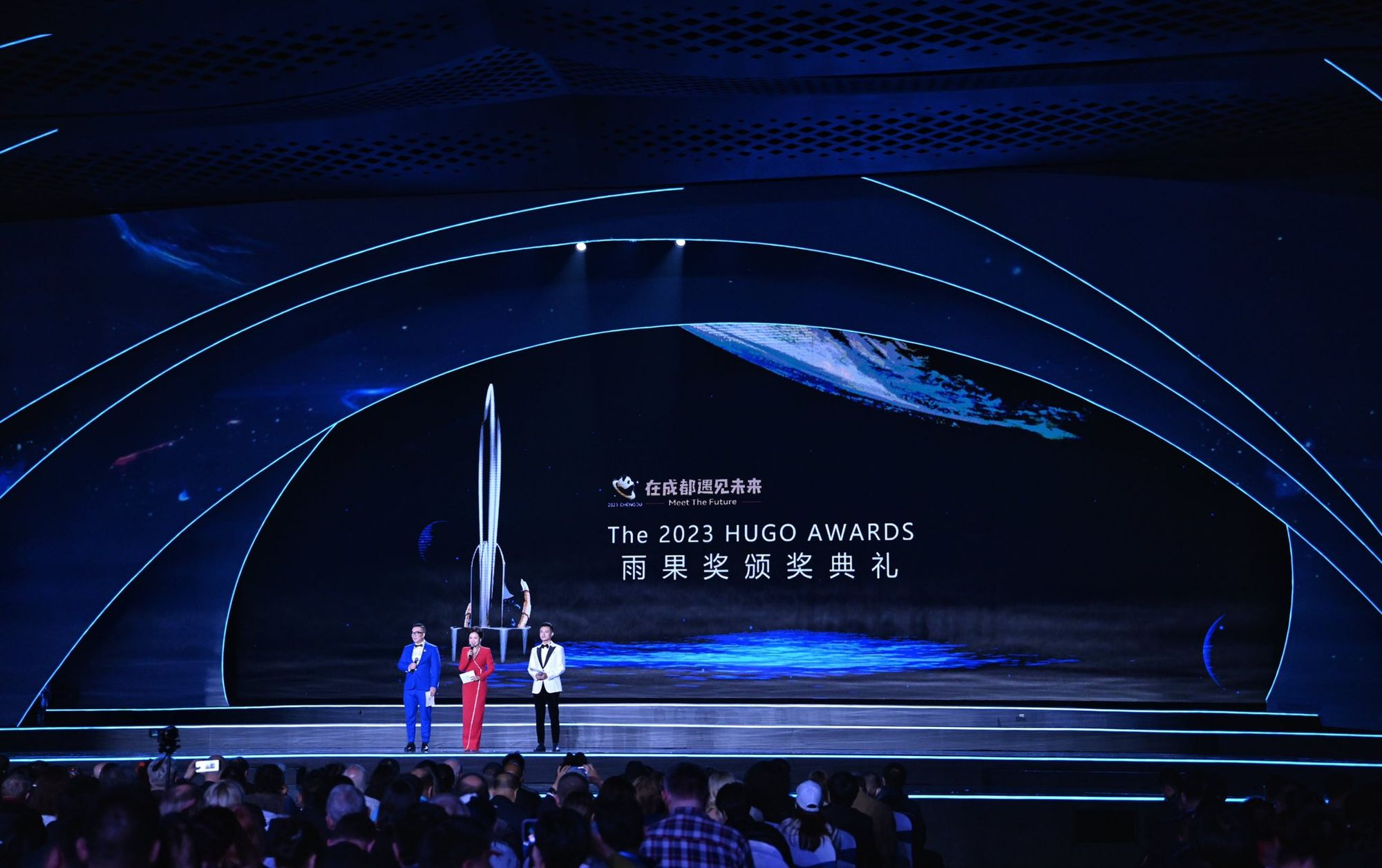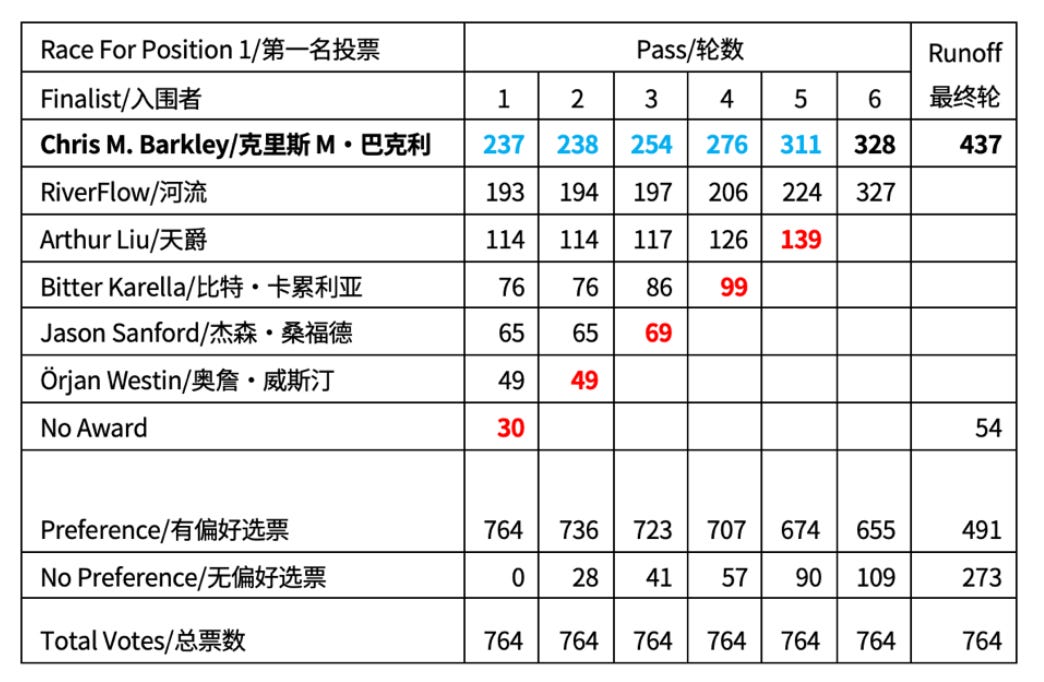Astrolabe Digest: 120423
YouTube plagiarism, how a 17 year old convinced Nintendo to go 3D, and nitty gritty Hugo ballot stats

Hey, hi! Welcome to Astrolabe Digest. This is a new column for paid supporters1 aimed at keeping y’all informed about the best stories in Astrolabe’s orbit. Think of it like a levelled-up version of Quest Markers.
Astrolabe Digest isn’t here to replace main Astrolabe issues (I’ve got a couple cooking and they are doozies!), but to supplement them by bringing you more goodness while the big stories bake.
With freelance games journalism becoming more and more untenable, I’m looking at diverting my time and energy toward providing more value for paid Astrolabe supporters, as a way to keep doing what I’m doing. So, if you appreciate my work here or elsewhere, consider a paid subscription.

HBomberguy exposes YouTube plagiarism in video longer than the extended edition of The Fellowship of the Ring
- In a nearly four hour long video called “Plagiarism and You(Tube),” Harris Brewis (Hbomberguy) tackles media plagiarism on YouTube—including iilluminaughtii and Internet Historian—with a particular focus in its later half on James Somerton.
- Somerton is a Canadian video essayist and blogger who focuses on LGBTQ+ representation in media. It’s been reported that his Patreon produced ~$170k/year in support of his work. “For context,” wrote Washington Post reporter Gene Park, “that is a higher salary than basically all of mainstream media except for the few elites. this includes most of the New York Times, the highest paying newspaper.”
- Further context: I expect to make $200-500 for a freelance feature. Each one takes many hours over a few weeks of research, interviews, writing, revising, etc. To match Somerton’s Patreon income (and excluding any monetization via YouTube), I’d have to publish 1-2 features per day, 365 days a year. I could’ve sold ten (10!) books on the scale of Fight, Magic, Items and still not reached Somerton’s Patreon income for the year based on the advances.
- Throughout the video, Brewis provides context for plagarism in online media, and spends copious time detailing Somerton consistently repeating content, verbatim, from books and other media in a way that made it seem like his own. When confronted by viewers who noticed, Somerton’s response was defensive, and the behaviour continued.
- “Internet video as a business is at odds with internet video as a medium,” Brewis says about 42 minutes into in his internet video. “The increased industrialization of videos doesn't necessarily make the videos better. Just easier to make.”
- “James Somerton, went from scoffing at it to apologizing to completely obliterating his online presence as the 3 hours, 51 minutes and 9 seconds elapsed,” reported Boing Boing’s Rob Beschizza. He also highlighted Brewis’s point that oftentimes plagiarists spend more time/energy/resources covering up their offensives than it would’ve taken to do the work credible in the first place.
- As Stef Schrader said on Bluesky, “always let legal know when you've been plagiarized!”
- Brewis and his producer Kat Lo have set up a collection form to gather further examples of plagiarism in Somerton’s videos. Brewis has stated he’ll split revenue from “Plagiarism and You(Tube)” with the affected writers.
- Brewis and Lo have created a playlist of queer YouTube content creators.
- It’s impossible to summarize everything covered in this video, so just go watch it.
How a 17 year old convinced Nintendo to go 3D
Back in 1996, Nintendo changed console gaming (again) with the release of Super Mario 64. Its shift from 2D to 3D remains a watershed moment for the company, but might never have happened2 if not for an impressive tech demo by a young developer named Dylan Cuthbert.
In partnership with Nintendo World Report, the Video Game History Foundation has tracked down, verified, and published a Game Boy ROM file of Eclipse — a tech demo developed by Cuthbert when he was still a teenager, and a precursor to a Japanese-only Game Boy game called X (not formally known as Twitter.)
“Despite its limited, Japan exclusive release, X is generally considered to be one of the most important games ever made,” wrote Nintendo World Report director John Rairdin for the Video Game History Foundation. “And all of that came from a single, mysterious demo that until now, has remained lost to time.”
“That demo [Eclipse] was the pivot point for Argonaut and got us flown to Kyoto, and the rest is history,” Cuthbert told New Yorker in 2022. Video Game History Foundation founder Frank Cifaldi has described the demo as “the DNA of what led to Star Fox.”
For those interested, a (fully legal) ROM of the prototype can be downloaded via the VGHF Patreon post. It can be played in software emulators, on real hardware via something like an Everdrive, or on Analogue Pocket and similar handheld devices that accept .gb files.

The Hugo Award voting statistics are finally here! (Sorta.)
Most years, the nomination and voting statistics for the Hugo Awards—one of science fiction and fantasy’s largest awards—are released a few hours after the ceremony. It’s a fun time for fans and professionals to dig into the data to discover close races and near misses, and, if they’re lucky, perhaps see their name on the “long list” of nominees who didn’t received enough nominations to make the final ballot, but are there nonetheless. (Astrolabe appeared on the long list last year, which was fun!)
Due to logistical issues both in China, where the ceremony was held, and at home, Hugo Administrator Dave McCarty was unable to provide the extended statistics with his usual haste. However, on December 3rd, the official Hugo Award website finally posted the detailed voting statistics for perusal.
However, the available statistics only cover the finalists, and don’t include the “long list” statistics, which are coming later.
“Two Time Hugo Award Finalist” Camestros Felapton has some observations, particularly centred around the volume of nominations compared to final votes. “It is unusual for there to be fewer final votes than nominations,” he says. “One thing we already knew was that the fear that some people had of the awards being dominated by large numbers of fans from the host country, didn’t happen.” If anything, he speculates, there was an under-representation of Chinese voters in the later stages.
Think your vote doesn’t count? Best Fan Writer winner Charles M. Barkley defeated runner-up RiverFlow by a single vote!

The World Science Fiction Society3 constitution requires the public release of nomination statistics within 90 days post award ceremony. So, according to McCarty, we should have the full nomination statistics by mid-January at the latest.
Support
There are lots of ways to support Astrolabe and my other work. Check ‘em out!
Keep In Touch
Enjoy Astrolabe? Want more SFF and retro gaming goodies? You can find me on Twitter and my website.
Credits
Astrolabe banner photo by Shot by Cerqueira on Unsplash
They’ll be exclusive for paid supporters on release, then opened to everyone a week later. ↩
JK. 3D console gaming was inevitable, but there is a direct line between Cuthbert’s work and Nintendo’s first forays into 3D gaming pre-Nintendo 64. ↩
Who sorta, but not really, but kinda run and support the Hugo Awards. ↩

